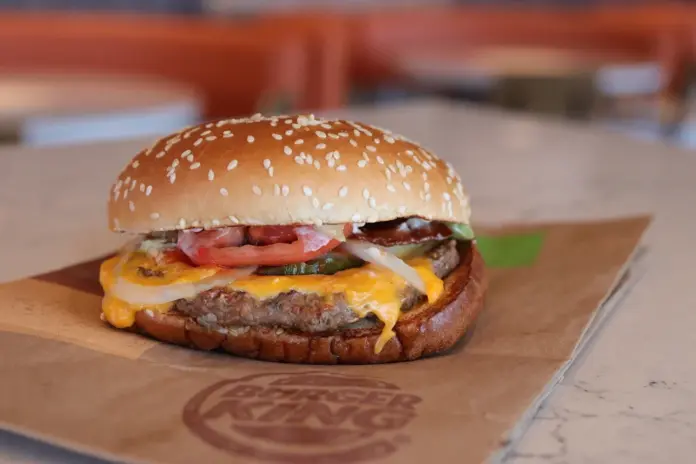A federal judge has ruled that a lawsuit against Burger King can go forward, permitting plaintiffs to sue the fast food giant for allegedly deceptive ads regarding the size of its burgers most prominently, the Whopper.
What’s in the lawsuit?
On Monday, Florida District Judge Roy K. Altman denied Burger King’s motion to dismiss the case, a major milestone for the 19 plaintiffs from 13 states who allege they were misled by Burger King’s advertising.
The center of the lawsuit revolves around the differences between Burger King’s ads and what the consumers actually get. Plaintiffs contend that the firm overstated the size and composition of its burgers, particularly promotional pictures.
The lawsuit said Burger King started materially exaggerating burger size in advertisements from September 2017. Ads featured giant meat patties and ingredients spilling out of the buns in exaggerated fashion, suggesting the burgers were roughly 35% bigger and had more than double the meat than they actually did.
Judge Altman concurred that the charges “transcend mere exaggeration or puffery,” stating in his ruling that it is “plausible to believe that some reasonable consumers could be deceived.”
Also read: Flash Floods Force Louisiana School & State Office Closures May 7
Visual Evidence Strengthens Claims
One of the major points of the plaintiffs’ argument is a series of side-by-side photos that compare shiny, oversized burgers on ads to actual photographs of what they did end up with. The comparison is dramatic — towering, brightly lit burgers on TV versus relatively flat, less desirable sandwiches in actuality.
Judge Altman indicated that “most reasonable consumers would be annoyed” by the strong visual differences. He added further that the case could not easily be characterized as hyperbolic marketing, and that the consumers’ arguments perhaps have a measure of legal basis.
What the Lawsuit Addresses
The lawsuit does not stop at the Whopper. There is a wide range of menu items among the list of supposedly exaggerated offerings. These are:
- Impossible Whopper
- Big King
- Bacon King
- Whopper Melt
- Breakfast Bacon King
- Double Cheeseburger
- Egg & Cheese Croissan’Wich, among others.
Each of the plaintiffs claims to have bought one or more of these things in anticipation of what was promised, but left in the dark and disappointed.
Burger King’s Response
In a release, Burger King refused to comment, claiming the advertised flame-grilled beef patties used in marketing are the identical product sold at restaurants. Burger King maintains that it has not deceived customers and its marketing strategy adheres to traditional fast food marketing practice.
Notwithstanding this, the judge’s ruling means the company will have to prepare for a potential jury trial. Although no hearing has been scheduled, the plaintiffs have asked for the case to be heard by a jury.
More General Implications for Fast Food Commercials
The lawsuit is an example of increased consumer resistance to hyperbole in advertising in the fast food market. While advertisements have been known to increase the appeal of products for years, this lawsuit may mark a closer eye on the extent to which companies can promote their products.
Experts say that if the lawsuit is successful, it may create a legal precedent and possibly pave the way for future lawsuits against other chains.
Also read: Tragic Crash in Kansas Claims Lives of Teen Basketball Players and Coach
Final Thoughts
As the case moves forward, Burger King faces both legal and reputational challenges. For consumers, it raises an important question: Should fast food look like the ads? And if not, how far is too far when it comes to marketing?
For now, the Whopper controversy is sizzling in court, and it’s not over yet.








